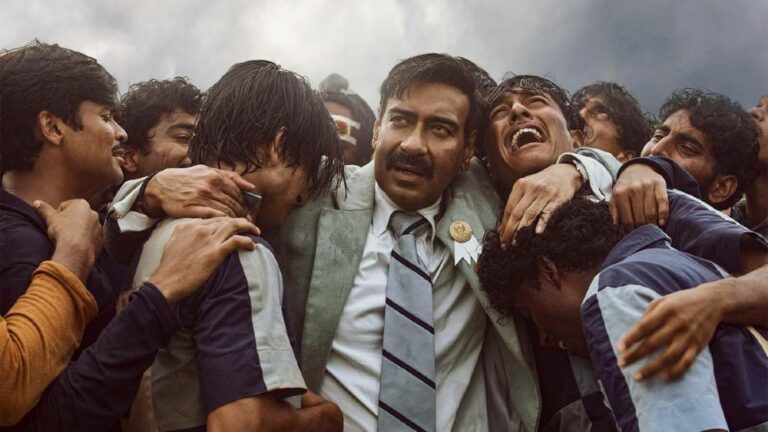In the contemporary landscape of business, characterized by dynamic shifts and intense competition, and the ever-evolving customer journey, effective leadership stands as a cornerstone for organizational success. As CXOs, entrusted with steering our enterprises, through an era of disruptive technologies, heightened customer expectations, and global economic uncertainties, the quest for inspiration and strategic guidance in navigating complexities and driving teams toward success is perpetual. Surprisingly, valuable leadership lessons can be gleaned from unexpected sources, and the recent movie “Maidaan” serves as a powerful case in point.
Maidaan is a narrative that combines vision and legacy. Yes, it tells the story of the eminent Indian football coach, Syed Abdul Rahim. The film delineates his odyssey in elevating Indian football from a realm of constrained potential to a formidable entity on the global stage. However, Rahim’s steadfast faith in Indian football’s promise, notwithstanding initial skepticism and resource constraints, serves as a compelling testament for leaders.
Maidaan: A Story of Vision and Legacy
Lesson 1: The Power of Vision with Conviction
Great leaders possess a clear vision – a well-defined picture of what success looks like for their organizations. However, a critical differentiator is an unshakeable belief in the possibility of achieving that vision. Rahim’s unwavering conviction in Indian football’s potential serves as a powerful illustration. This belief transcends mere optimism; it’s a burning passion that inspires not just the leader themselves, but also the entire team. It fosters a “can-do” attitude and propels everyone forward with a shared sense of purpose.
Applying this Lesson: As CXOs, we must cultivate a clear vision for our organizations, a vision that not only defines success but also prepares us to navigate the disruptions that characterize today’s business landscape. This vision should be ambitious yet achievable, setting a north star for our teams to strive towards. More importantly, we must genuinely believe in this vision and articulate it with passion and conviction. This unwavering belief becomes contagious, inspiring our teams to overcome challenges and embrace the journey towards achieving the ultimate goal.
Lesson 2: Forging a Unified Front: Beyond Individual Talent
While talent is crucial, winning teams are not simply a collection of individual stars. Rahim’s genius arguably lay in his adeptness at identifying nascent talent and, more significantly, in fostering cohesion among players from diverse backgrounds. This engendered a sense of camaraderie and shared purpose, transcending individual prowess and culminating in a unified force striving toward a collective dream.
Applying this Lesson: In the boardroom, building a strong leadership team and fostering collaboration across departments are essential for innovation and agility. Diversity of thought and experience enriches decision-making and problem-solving. Beyond identifying individual talent, active cultivation of a collaborative milieu is imperative. This entails fostering transparent communication, nurturing trust, and instilling a sense of shared accountability toward organizational objectives.
Lesson 3: Navigating Adversity: The Resilience Imperative
Rahim’s narrative portrays encounters with resistance from entrenched establishments, resource constraints, and setbacks. However, his resilience shines through as he navigates these challenges adeptly, devising innovative solutions and fostering team morale amid adversity. The capacity to adapt, innovate, and inspire hope amidst trials epitomizes impactful leadership.
Applying this Lesson: As CXOs, confronting challenges and unforeseen exigencies is inevitable. The ability to remain calm, assess situations objectively, and develop creative solutions is paramount. Furthermore, fostering a culture of resilience within our teams is crucial. By openly acknowledging challenges, celebrating small wins, and encouraging transparent communication, we fortify team morale and sustain focus toward long-term objectives.
Lesson 4: Discerning Potential: Investing in Development
Great leaders see potential beyond the surface. Rahim likely identified players with raw talent and nurtured them into skilled performers. This focus on development is crucial. By investing in people and recognizing potential, we can empower them to grow and contribute significantly.
Applying this Lesson: Investing in talent development is no longer a luxury; it’s a necessity in today’s competitive business landscape. As CXOs, we must prioritize training and development programs that equip our teams with the skills and knowledge needed to excel in their roles. This not only enhances employee morale and satisfaction but also fosters a culture of continuous learning and innovation.
Lesson 5: Leaving a Legacy: Beyond Short-Term Wins
True leaders understand that leadership is more than just winning the next game or achieving the next quarter’s targets. Rahim’s dedication to cultivating a legacy for Indian football, extending beyond immediate triumphs, is emblematic. Similarly, as CXOs, our decisions should have a lasting positive impact on our organizations.
Applying this Lesson: While achieving short-term goals is important, we must also focus on building a sustainable and thriving organization. This necessitates laying a robust foundation for organizational longevity.
Leadership is a journey, not a destination. By continuously learning, adapting, and drawing inspiration from unexpected sources, we can become the kind of leaders who not only achieve success but also leave a lasting positive impact on our organizations and the people we lead. The echoes of these lessons, like the roar of the crowd at a winning goal, will continue to inspire future generations of leaders to strive for excellence.




















